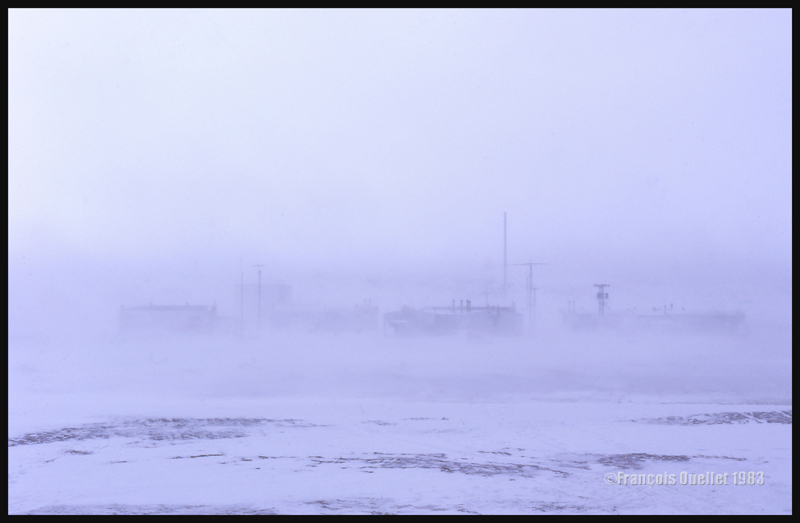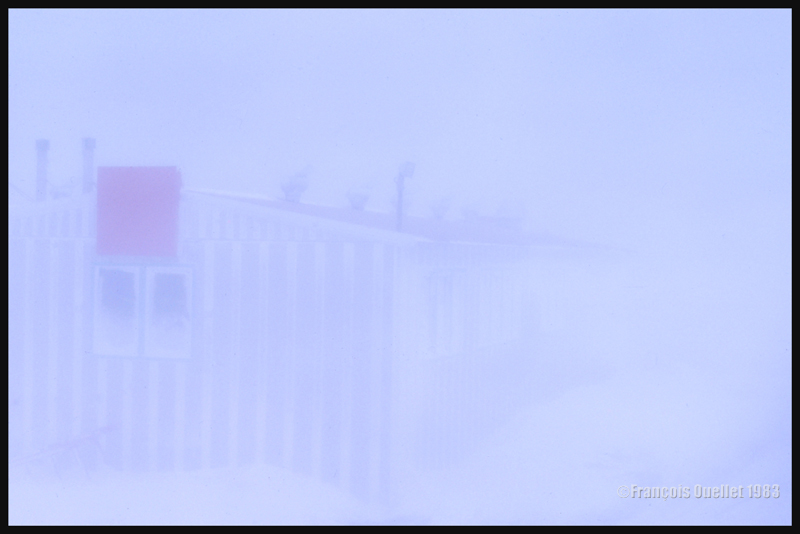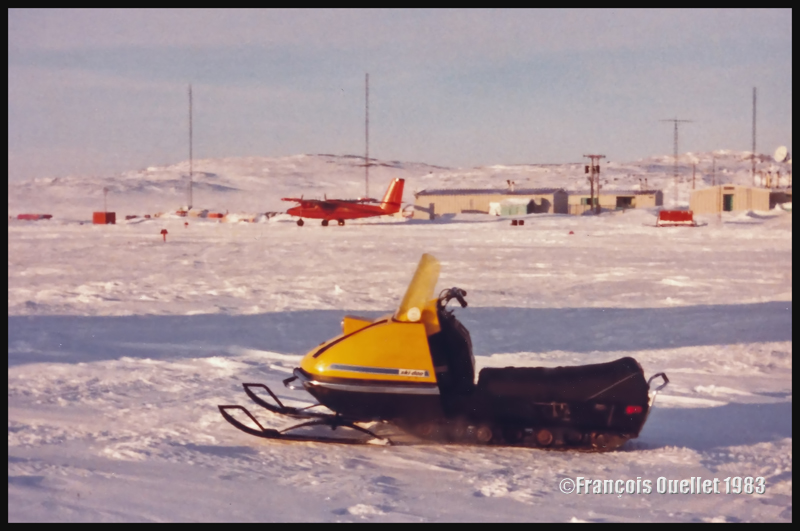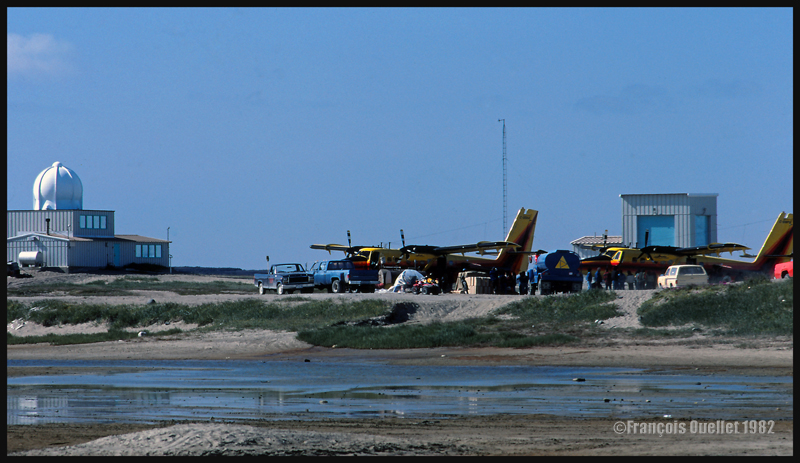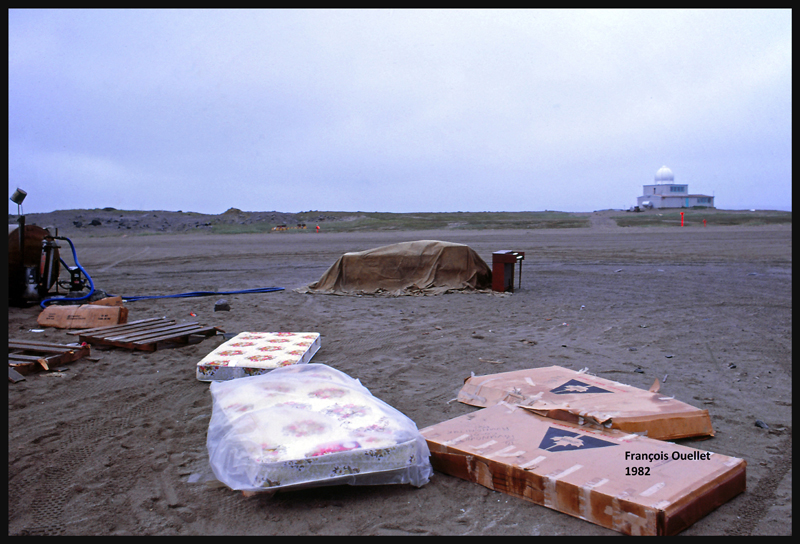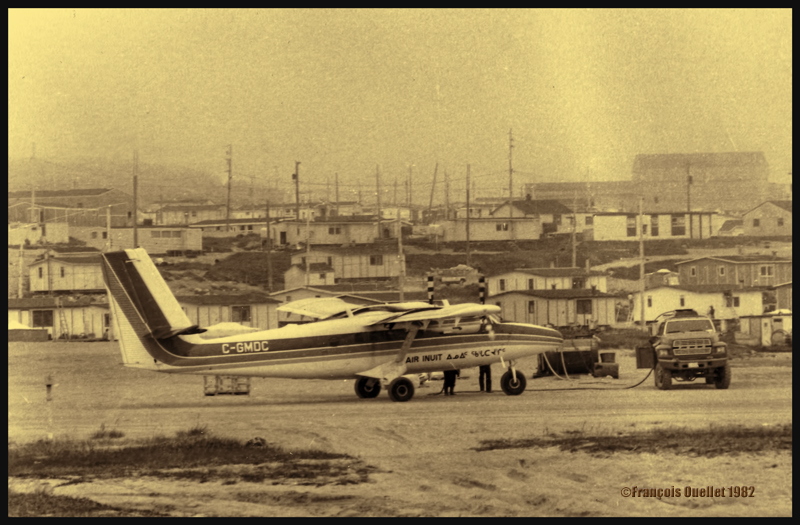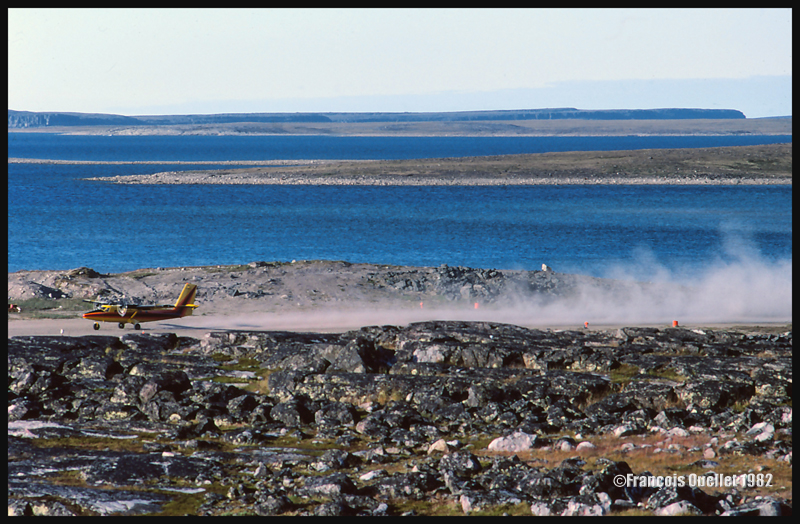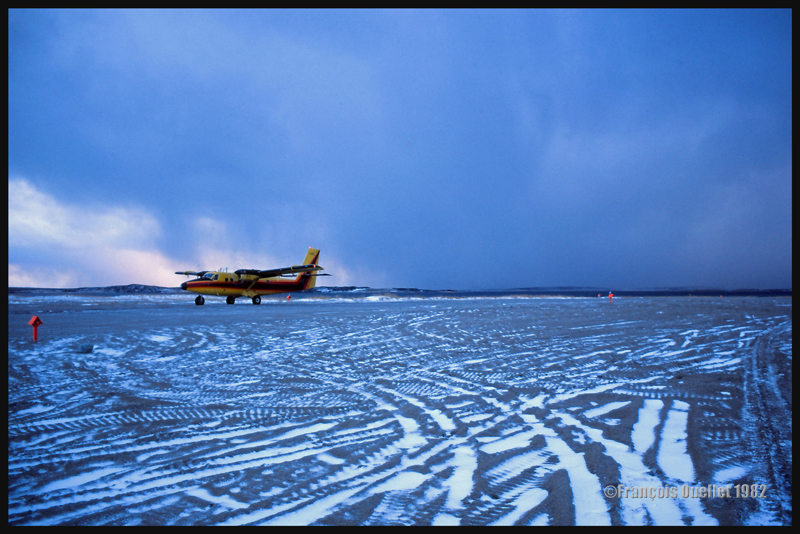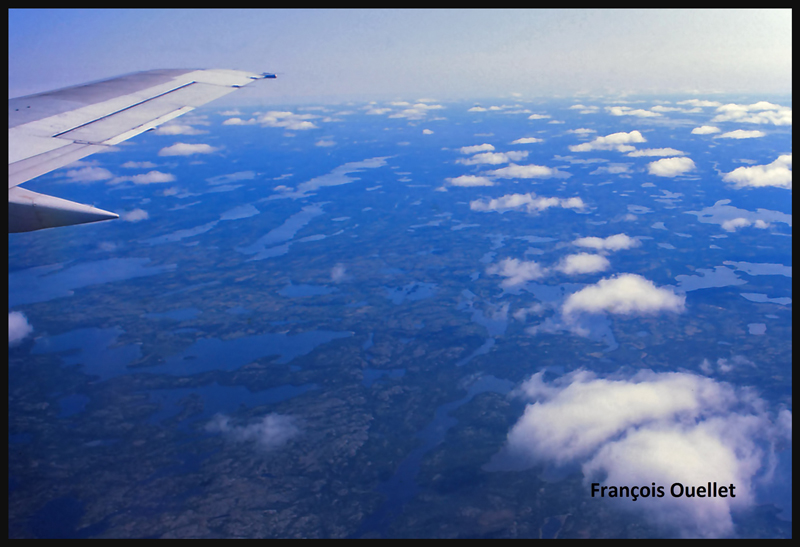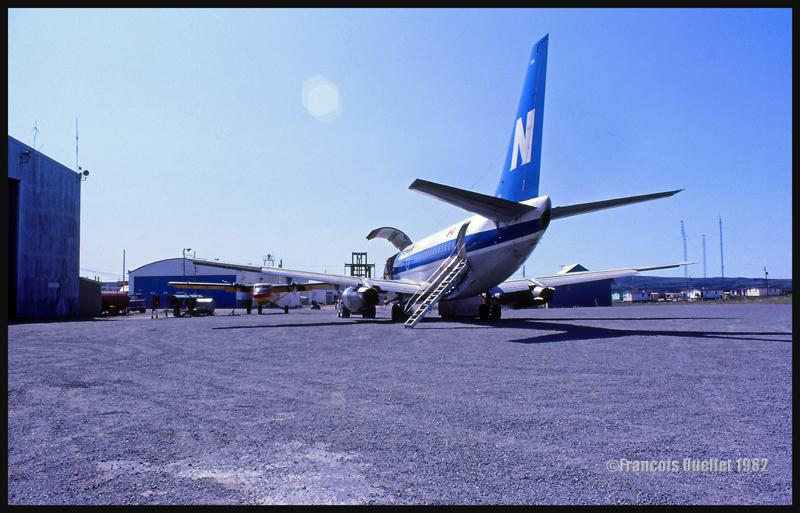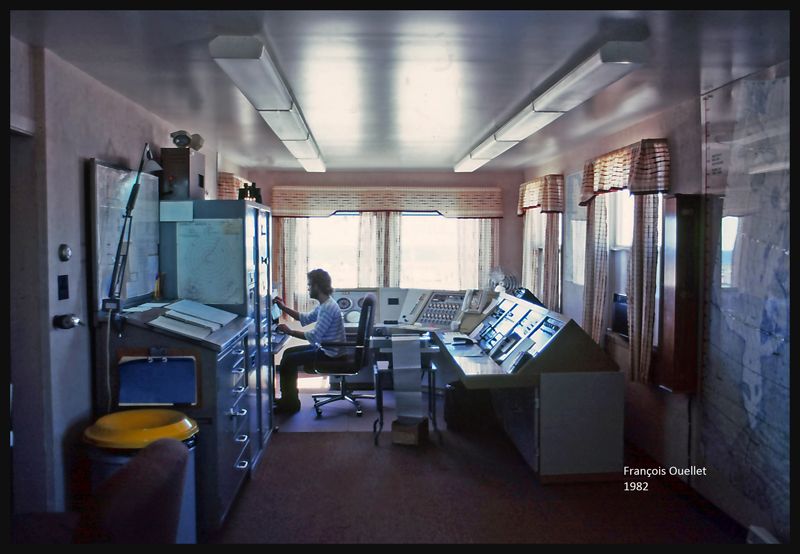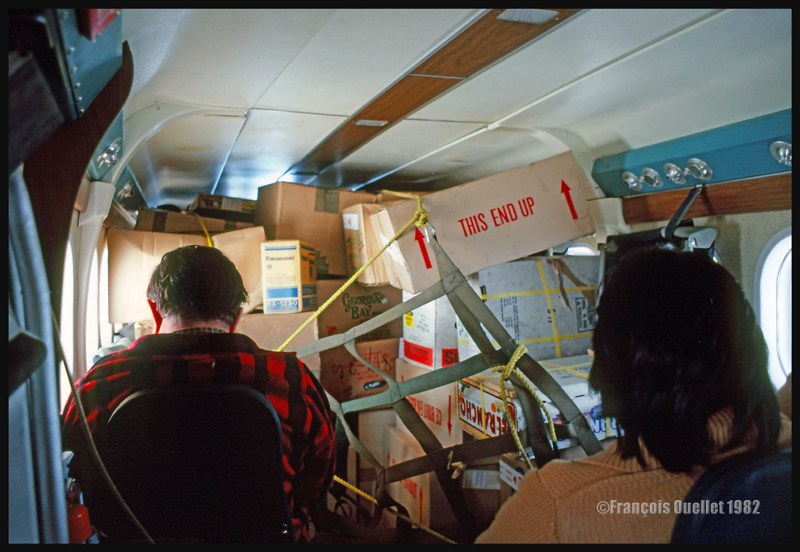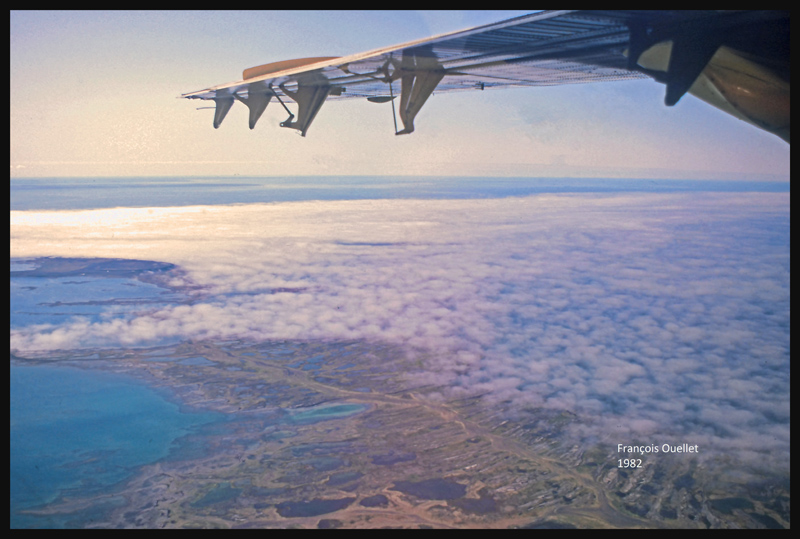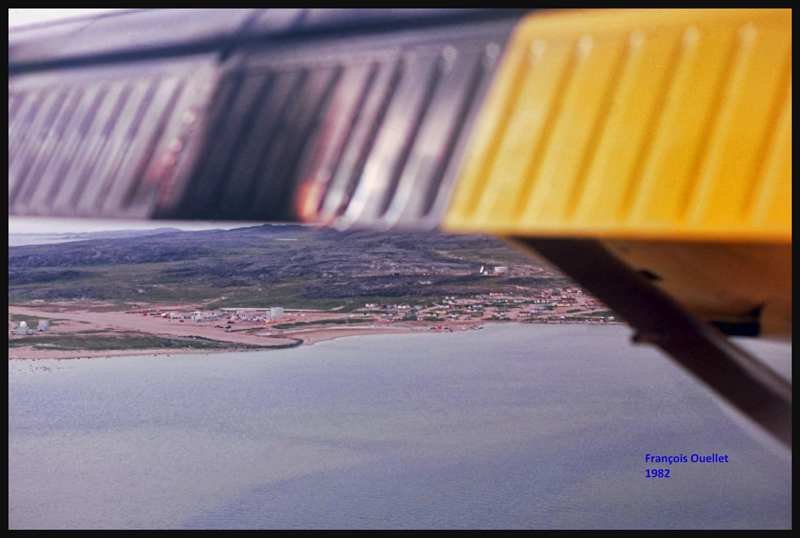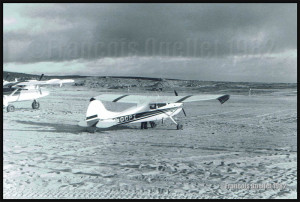(Precedent story: the UFO invented in Inukjuak in 1983)
The winter 1982-1983 was fierce in Inukjuak (CYPH), in the Nunavik. There was a period when the winds were strong enough and the visibility reduced to the point that a rope had to be attached between the staff house and the flight service station. A Transport Canada flight service specialist (FSS) had to hold a rope to guide himself from one building to the other. And good luck to the FSS who would try to carry his meal on a tray between both buildings. A hand held the rope while the other one took care of the tray which was going in all directions. On one occasion, tray and food found their way in the snowbank.
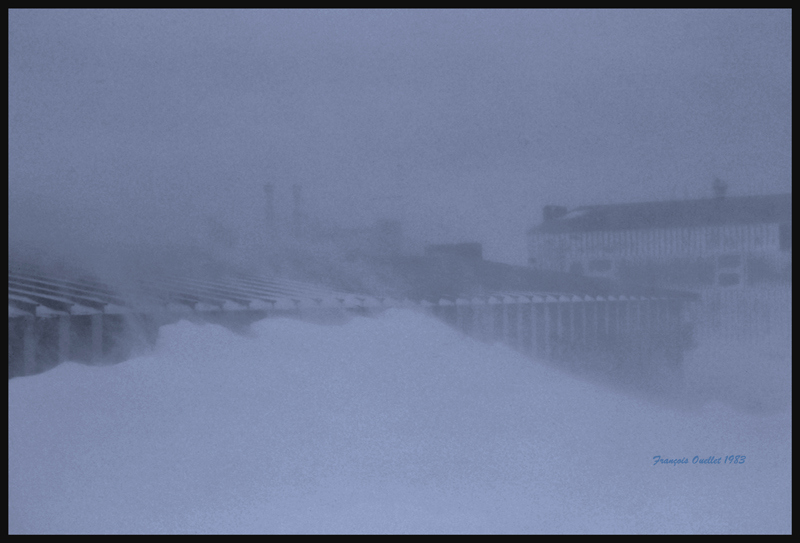
After a storm which seemed endless, I remember that the employees had to dig steps in the hardened snow in order to reach the flight service station door.
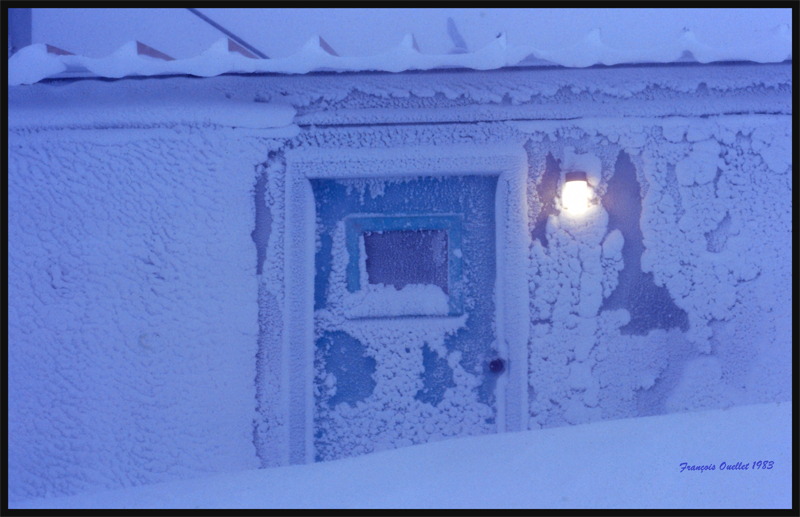
This blizzard, which lasted twelve days, had prevented any takeoff and landing. There was no more milk for sale in the Inuit village, as it was now reserved for children. Hardly one hundred feet over us, there was a perfectly blue sky, according to the pilots who had tried to land on multiple occasions. But one morning, an Austin Airways pilot decided to risk an approach.
The pilot could not benefit from any precise navigation aid during his approach, as the airport was only equipped with an NDB. So he trusted his local knowledge and what was left of his judgment. He knew that the staff house was painted green and situated just beside the runway. I guess that he prepared himself to aim for the colored staff house then make a sharp turn at the last minute. He dived into the storm, estimating the wind drift as much as he could.
At that same moment, our cook was working in the staff house’s kitchen. He was facing a huge bay window and was stunned to suddenly see the nose of a Twin Otter appear a few meters away from the window at the same time as a steep turn was being made to avoid the building. Reverse thrust was immediately applied to immobilize the plane as fast as possible. The cook repeated what he witnessed to every employee. I guess that helped him to unwind a bit.
As this was not enough surprise for the day, the plane’s doors opened and, instead of the much needed milk cargo expected by the villagers, we witnessed about ten passengers stepping out the plane and chitchatting like nothing ever happened. This unorthodox approach to the Inukjuak airport would now be one more story added on top of all the others told by pilots offering daily air service to northern Quebec villages along Hudson Bay and Ungava Bay coasts.
(Next story: the cockpit of a KLM Boeing 747 during a night flight over the Atlantic)
For more real life stories of a FSS in Inukjuak, click on the following link: Flight service specialist (FSS) in Inukjuak
